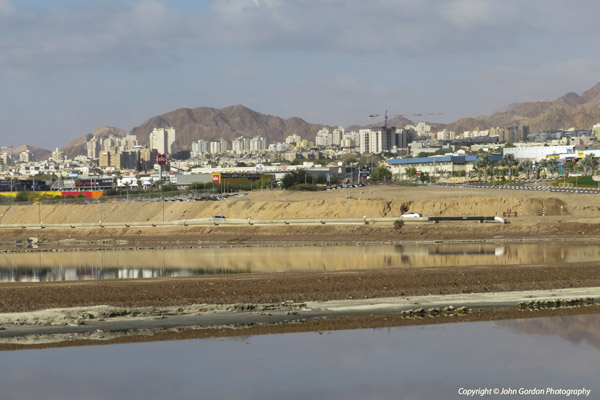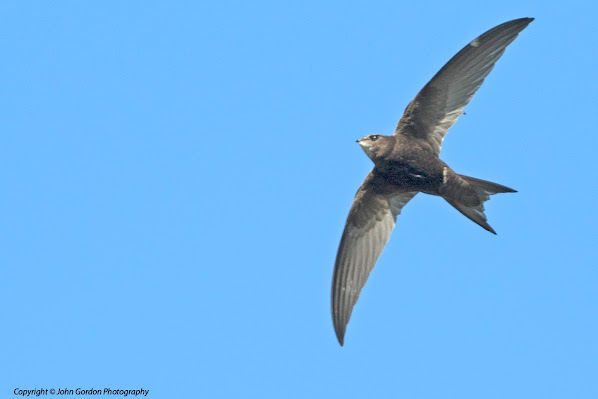Israel Mar 14-April 6 2023
I first visited Israel forty-five years ago. Originally I had planned to stay a few weeks before travelling overland to India. Weeks turned into months. I kept a dairy of my adventures describing the wonderful sights and "exotic" birds I saw. I had always wanted to return.
 |
| White-spectacled Bulbul |
During my stay I hitch-hiked the length and breath of the country including several days in the disputed West Bank. I was shown great hospitality by both Israeli and Palestinian families.
The purpose of the second visit would be two-fold. First to re-visit and photograph places I had written about and second to attend the 2023 Eilat Bird Festival, something planned for 2019 but cancelled due to the pandemic.
"Organized by the Israel Ornithological Center (Birdlife Israel) of the SPNI, the Eilat Birds Festival brings together birders from all over the world for an unforgettable birding week during the peak of spring migration in southern Israel. Since the first festival in 2007, the Eilat Festival is now a well-established event and is known in birder's circles as the ultimate package for birding Southern Israel.
The Festival is based in Eilat and takes in all the major sites and key species of Southern Israel. Besides the Eilat area, the festival package includes excursions further afield to Nizzana and the Negev as well as the famous "Stars of the night" tour to the Dead Sea region.
Tel Aviv
After the fifteen hour flight, Sandee and I headed for the beach. We encountered the usual suspects, House Sparrows, Common Mynas, Laughing Doves and Hooded Crows.
 |
| Laughing Dove |
Our walk along the promenade turned-up a solitary Yellow-legged Gull. Between the high-rises and hotel complexes Common Swifts were on a feeding frenzy. The building's ledges and crevices also make ideal roosting and nesting sites.
 |
| Jaffa |
Mentioned in both the Old Testament and Greek literature Jaffa is one of the oldest ports in the world. It was a short walk from our hotel. Around the port and with more than a little sleuthing I eventually found a Little Egret in the harbour, a Pied Kingfisher hunting over the surf and a Graceful Prinia in the local park.
A pair of Eurasian Hoopoe, the national bird of Israel paid little notice to passersby. Five lifers was a great way to shake off the jet-lag.
.jpg) |
| Graceful Prinia |
 |
| Eurasian Hoopoe |
%20web-9446%20(1).jpg) |
| with Crest lowered |
Eilat
Situated on the Red Sea and on the southernmost tip of Israel, Eilat is a five hour drive south of Tel Aviv. Development has impacted wildlife. Acres of prime habitat including vital salt marshes have been lost. The Society for the Protection of Nature in Israel (SPNI) and others are working to educate government and the public about the value of protecting the remaining habitat.
 |
| Greater Flamingos and Gray Herons are squeezed into a few small salt ponds. |
 |
| Eilat has grown from a sleepy coastal town to a major resort destination. |
Attending the Eilat Bird Festival was not only to learn about the birds but to experience the important conservation work taking place in Eilat and elsewhere in Israel. One example is the cross border co-operation with neighbouring Jordan and a long running Barn Owl project. SPNI is also involved in numerous other projects, too many to list here. Our registration fees went to habitat enchantment. Guides donated their time and skills. Following the Eilat Bird Festival, the Champions of the Flyways held their annual fundraiser and with corporate backing raised a substantial amount. Follow link for more info.
 |
| Greater Flamingo |
The Eilat Bird Sanctuary, formally a garbage dump is now a haven for resident and migratory birds. Work is underway to expand with extensive planting of native shrubs and trees.
 |
| Eilat Bird Sanctuary |
Eilat would be our home for ten days, seven of which I would be birding while Sandee visited the beaches, the hotel pool, sauna and stores. Isn't life good.
 |
| Citrine Wagtail. |
Hazardous infrastructure
Slowly but surely there has been some progress. Lobbying, backed up with scientific data from SPNI has put the brakes on proposed installation of wind turbines around Eilat. Bird Life Israel is even working in conjunction with Eilat's air traffic control to make sure planes, even commercial jets are not taking off and landing during peak migration times when thousands of raptors can be found soaring on midday and afternoon thermals. Early morning and evening scheduled take-offs are less likely to encounter birds and avoid bird strikes. Normal air service returns when migration ends.
 |
| Eurasian Spoonbills on the move. |
 |
| Egyptian Vulture |
At one high elevation location a continuous stream of various eagles, buzzards and kites soared on thermals heading northward to Central Europe and the Russian Steppes. At lower elevations Spoonbills and shore birds were on the move as were large numbers of passerines.
.jpg) |
| Black Kite |
 |
| Short-toed Eagle |
 |
| Common Buzzard |
 |
| Nubian Ibex |
The map below shows the location and the direction of both spring and fall migrations. Many species had already covered great distances and still face challenges ahead.
 |
| Migratory shorebirds fuel-up at the sanctuary salt ponds. Common Redshank, Ruff and Little Stint. |
 |
Collared Pratincole winter in Africa and migrate through Eilat to southern Europe to breed.
|
 |
| Spur-winged Lapwing |
 |
| Squacco Heron |
Along with the McQueen's Buzzard, the Black-Scrub Robin (below) were the highlights for the avid listers in the group. The McQueens's were scope views of them dancing on a Lek. One evening we birded the Dead Sea until midnight and had good looks at a Nubian Nightjar. Those were just a few of the 90 Lifers I picked upon the trip. Two-hundred plus species were seen or heard during the week. I ticked 172 that I actually saw.
The first and third videos (below) are the best example of what we saw but because of the midday haze it was impossible to video the behavoir ourselves
Macqueens's Bustard
 |
| Black Scrub Robin. |
Black Scrub Robin
 |
| Black-eared Wheatear winters in the Sahara and breeds around the Mediterranean. |
 |
| The Blackstart is a resident. Israel had no endemics. |
 |
| Corn Bunting |
 |
| Palestinian Sunbird. |
 |
| Woodchat Shrike |
.jpg) |
| Bluethroat |
 |
| Ruppell's Warbler |
Hula Valley
The second part of the trip was for Sandee whose wish was to visit Galilee, Nazareth, Jerusalem and Bethlehem. We did that and more. Between the relics I did manage to fit in a few hours birding. In Galilee I spent an afternoon in the nearby Hula Valley. The contrast from Eilat and Negev Desert was startling. The dry desert heat was replaced by a lush fertile plain. The area was once extensive marshes but had been drained and crops planted. Slowly but surely and with co-operation from government, (SPNI) and the farming community the birds are returning.
 |
| Common Cranes and White Storks forage in Northern Israel's Hula Valley |
 |
Black-winged Kite
|
 |
| Eurasian Kestrel |
 |
| White Storks riding thermals in the Hula Valley |
 |
| White-throated Kingfisher |
Sea of Galilee
Every evening I would take a walk down to the shore of Galilee to watch the Armenian Gulls, Cattle Egrets, Pygmy Cormorants, Whiskered Terns, Common and Little Swifts.
 |
Pygmy Cormorant
|
 |
Whiskered Tern
|
 |
Eurasian Kestrel with lizard.
Mount of Beatitudes
|
Jerusalem.
At the Wailing Wall and Temple Mount Common Swifts swooped above worshippers.
 |
| Common Swift |
Our hotel on Jaffa Road was within walking distance from the Old City and conveniently only a twenty minute walk to the Jerusalem Bird Observatory. The Gazelle Valley was a short taxi ride. Before Jerusalem grew into the bustling city it is today there were once wildlife corridors which allowed animals to move freely through the region. That no longer exists.
 |
| Gazelle Valley |
"Under the authority of the Jerusalem Municipality and the Society for the Protection of Nature in Israel (SPNI), the Gazelle Valley nature reserve spans 61 acres of land in southwest Jerusalem and is home to around 80 mountain gazelles that are able to live freely in the park."
Jerusalem Post
 |
| Mountain Gazelle |
Birding Pal
In Jerusalem I met up with Naomi, a Birding Pal who had kindly offered to show me around the reserve. Her keen ear found me the Sardinian Warbler, a bird I had seen in Eilat but I hadn't been able to photograph.
 |
| Sardinian Warbler |
 |
| Ferruginous Duck |
The last full day in Israel I visited the Jerusalem Bird Observatory. I joined a group of school children as they attended a bird banding session. Lifers that morning included a Collared Flycatcher and Monk Parakeet and finally after countless hours of searching, a Common Nightingale.
 |
| Syrian Woodpecker |
 |
| Common nightingale |
Note: Overall we felt safe wherever we went. I was important to keep an open mind and listen rather than take political stands one way or the other. Even though some of our friends felt concerned I personally don’t think Israel is anymore dangerous than Mexico or even my own community Surrey B.C.
"It's never too late to return"
John Gordon
Langley/Cloverdale
BC Canada
Top birds
Mcqueens's Buzzard

Much work has been do see
Save the birds for a list of events, programs and information.



.jpg)

%20web-9446%20(1).jpg)







.jpg)































.jpg)
Great post thank you. Also thank you for your open mind concerning the situation in the region.
ReplyDeleteRegards,
Roos
Fantastic photos and great blog.
ReplyDeleteRegards,
Roos